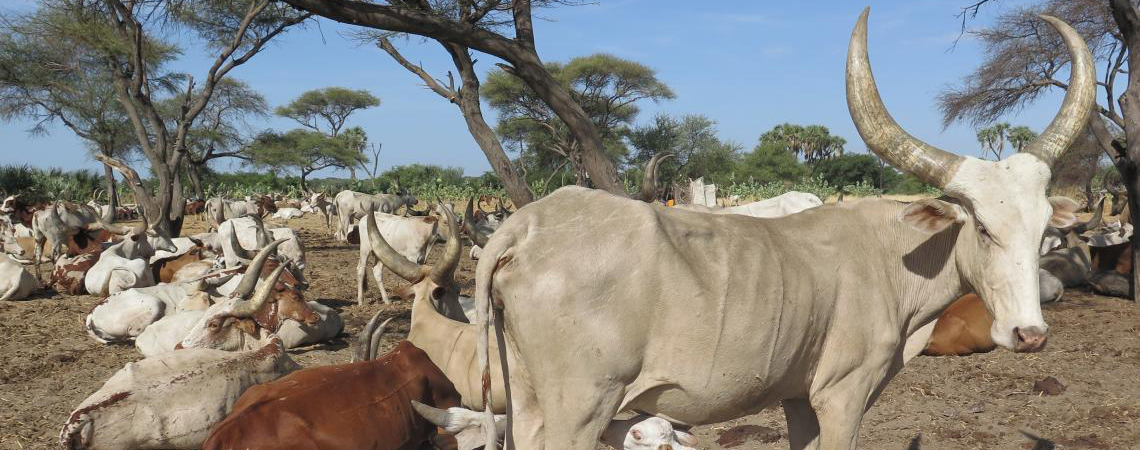
Photo:
The “Chad National Adaptation Plan Advancement Project” focused on integrating climate change adaptation into medium- and long-term planning and budgeting of climate-sensitive sectors to support the nation in achieving its Nationally Determined Contribution to the Paris Agreement as well as global goals for low-carbon climate-resilient development.
- National
- Local Governments
- National Governments
- Non-Governmental Organizations
- United Nations Development Programme (UNDP)
- Global Environment Facility (GEF)
- Ministry of Environment and Fisheries Chad
- United Nations Development Programme (UNDP)
Expected outcomes
Outcome 1: An integrated information system, including a reliable database of climate and socioeconomic data, supports the integration of adaptation into policy and decision-making processes
Outcome 2: Institutional capacities are strengthened in key sectors and regions to facilitate the integration of climate change adaptation into planning and budgeting
- Image
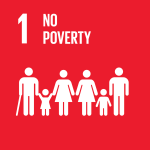
- Image
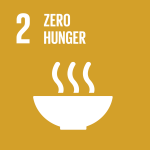
- Image

- Image
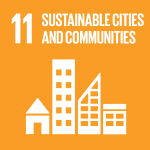
- Image

- Image
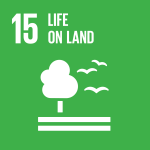
Climate change will have particularly strong impacts on the living conditions of people, ecosystems, and economic and social development as it adversely effects agricultural, livestock and fisheries sectors, which employ about 80 percent of the total population of Chad, as well as on the water resources sector.
Agriculture, which mainly consists of rain-fed crops, accounted for 16.6 percent of GDP in 2015 (ECA, 2016). Subsistence crops dominate agriculture, accounting for 80 to 85 percent of the subsector. However, agricultural performance has remained poor for 15 years. Climate hazards and inappropriate technologies are the main factors that influence production, especially food production that represents approximately 90 percent of agricultural activities, of which cereal crops are the principal component. Cultivated using low-performing traditional techniques and dependent on the amount and distribution of rainfall, cereals yields remain very low throughout the territory, while sown areas are increasing, employing 83 percent of the active population of Chad, including 47.9 percent of women (SCN, June 2012). Climate change will cause i) significant declines in yield and production (-10 to -25%) of food crops (millet, sorghum, maize) due to water shortage caused by successive droughts, high temperatures, late start and / or shorter rainy seasons; ii) a decrease of productive areas for cash crops, such as cotton, whose development has progressively shifted from the Sudanese-Sahelian zone to the Sudanese zone, due to the southward shift of isohyets, iii) a loss of land cover charge, and an expansion of cultivated land at the expense of forest land that may lead to irreversible deforestation in the long-term, and iv) the extending geographical distribution of crop predators that could lead to a decrease in agricultural production.
The livestock sector contributed to 6.4 percent of the national GDP in 2015 (ECA, 2016) and provided direct or indirect income to 40 percent of the population. For this sector, the effects of climate variability and change are likely to: (i) reduce cattle and milk production, due to significant decreases in feed and thermal stress caused by temperature peaks; and (ii) increase the emergence of diseases (e.g. trypanosomiasis). Such impacts were already seen in 2009, when a late start to the rainy season and the development of vector diseases due to increased temperature created a shortage of grazing and an animal health crisis, which led to the death of almost 30 percent (780,000 head) of the herds in the regions of Kanem, Lake Chari-Baguirmi, Hadjer-Lamis and Bahr El Gazal.
Additionally, the fisheries subsector contribution to GDP, estimated at 10 percent in 2002, fell to 3.2 percent in 2012. Dependent on river flooding, fish production is also strongly influenced by climate variability and change, resulting in: i) a reduction in water bodies due to droughts; and ii) large increases in the amount of water, creating floods with devastating economic consequences. Ecologically, these floods result in severe erosion of the cultivated river banks and in unprecedented silting of water courses that are essential for the economic, social and cultural development of surrounding communities. These climate impacts are also exacerbated by an increase in the number of fishermen and the widespread use of small mesh nets and active gear, which undermines the fishing potential of the affected areas.
Chad is a landlocked country in Central Africa with a very pronounced continental climate and no oceanic buffer. It has a surface area of 1,284,000 km² and borders six countries. The nearest seaport is Douala in Cameroon, 1,700 km from the capital N'Djamena.
Chad has three bioclimatic zones: the Saharan zone, the Sahelian zone and the Sudanian zone. To the north, the Saharan zone covers 63 percent of the territory and is home to two percent of the population. It receives an annual rainfall of less than 200 mm (CN2, 2012). The Sahelian zone, in the centre of the country, falls within the 200 mm and 800 mm isohyets. It covers about 28 percent of the total land area and represents 51 percent of the total population. The Sudanian zone, to the south, is the wettest area (800 to 1200 mm) and occupies 25 percent of the total land area of Chad (FAO, 2005).
Chad has experienced persistent drought for several decades. Deserts are advancing at a rate of 3 km per year in the northern part of the country (GFDRR, 2017). Precipitation varies from one year to another and from one decade to another. Meteorological observations in the Sudanian zone indicate a decrease in precipitation patterns during the rainy season (May-October) over the period from 1951 to 2000. In the Sahelian zone, rainfall has increased since the 1990s, with precipitation above the average over several years. Minimum average temperatures in Chad have increased by 0.5 to 1.7°C, depending on the observation stations, since 1950, while maximum annual temperatures have increased by 1.34°C over the same period.
The geographical location of Chad makes it one of the most vulnerable countries to the adverse impacts of climate change. Chad’s Second National Communication (June 2012) projects an average temperature increase of 1.2° by 2030, 2.2°C by 2050 and 4.1°C by 2100 in the Saharan zone of the country.
These results mirror IPCC projections (IPCC, 2014) of expected climate warning in Africa during the 21st century, exceeding the world’s average’s projected increase. According to these projections, the increase in average temperatures between 1980/99 and 2080/99 will reach 4°C over the entire African continent.
Availability of water resources is heavily impacted by a reduction in the surface area of open waters of Lake Chad (25,000 km2 in 1962 down to 2,000 km2 in 1992). Water availability will be further affected by a decrease in groundwater, the variability of hydrological regimes in the Logone and Chari River Basins, the reduced stream flows of the main rivers, and the early draining of temporary streams.
The 2016 Human Development Index (HDI) places Chad in 186th place out of 188 countries. According to the results of the Survey of Household Consumption and the Informal Sector in Chad (ECOSIT3), the national incidence of poverty is 46.7 percent, and is much higher in rural areas. The poverty threshold in Chad, based on the 2011 threshold, is around 237,942 FCFA per person per year, that is, 657 FCFA (US$ 1.16) per day. Approximately 47 percent of people in Chad live below this threshold. Health hazards are eminent, access to decent housing and drinking water challenging, and the education level is low.
Economic and social development planning needs to acknowledge the high uncertainty of the future climate, particularly the variability of rainfall, in a context where rain-fed cultivation remains the foundation of the country's economic and social development. Weak adaptation of the development planning system to the adverse effects of climate change means that most efforts are slow to improve living conditions of the population including the most vulnerable.
NAPs
Baseline scenarios indicate that climate change adaptation is marginally integrated into Chad’s development agenda. Climate change has been given a low consideration in the 2013-2018 Five-Year Agriculture Development Plan, the 2009-2016 National Livestock Development Plan and existing Regional Development Plans. Climate change risks are not being integrated into development activities or investment decisions (including the Government's budget allocations) in different sectors of economic development. This situation is principally due to the weak institutional capacity of policymakers to extract or use climate, socioeconomic and environmental data and the information necessary to adjust the planning of policy and investment to manage risk. Policymakers lack capacity to steer policies that could respond to the projected impacts of climate change. This includes the prioritisation and implementation of adaptation activities. Chad does not currently have the institutional resources to implement adaptation projects and measures.
Consultations with the populations of the different areas of the country as part of the NAPA preparation process in 2010 helped rank the priority areas for intervention and the most vulnerable groups to the adverse impacts of climate change. The sectors targeted are water resources, agriculture, livestock, fisheries and forestry. In the Sudanian zone, women and children form the most vulnerable group, followed by the elderly (group 2) and displaced persons and refugees (group 3). In the Sahelian zone, the first three groups are women and children, the elderly and invalids. In the Saharan zone, invalids, the elderly, women and children form the most vulnerable groups.
Building on the NAPA, which was a response to immediate adaptation needs, the process to formulate and implement National Adaptation Plans (NAPs) was established as part of the UNFCCC Cancun Adaptation Framework (2010). It seeks to identify the medium- and long-term adaptation needs of countries and develop and implement strategies and programmes to meet those needs. In Chad, this process is still nascent. A basic needs’ analysis and the preparation of a road map for conducting the NAP process have been carried out.
In line with the UNFCCC guidelines, in 2010 Chad developed its NAPA following a consultation process conducted between 2005 and 2008. The Chad NAP project incorporates five of the 10 priority areas identified in the NAPA, and extends implementation over the medium- and long-terms. These are: i) Priority Action 4 on information, education and communication on climate change adaptation, ii) Priority Action 6 on improving intercommunity grazing areas, iii) Priority Action 7, on improving the forecasting of seasonal rains and surface water flows, iv) Priority Action 8 on the creation of an observatory of climate change adaptation policies, and v) Priority Action 10 on the management of climate risks.
Chad has developed a National Gender Policy 2011-2020, from which the vision below is taken: "By 2020, Chad will be a country free from all forms of gender inequalities and inequities and all forms of violence, where men and women have the same chances of access to and control of resources and participate in a fair manner in decision-making bodies with a view to sustainable development". The project is aligned with this vision, especially through Strategic Focus 1: "Systematic integration of the gender dimension into systems of planning, budgeting, implementation and monitoring and evaluation of strategies, policies and/or national development programmes", and Strategic Focus 3: "Equal and equitable access to basic social services, resources and benefits by men and women."
The NAP project is in line with national priorities as defined in national-level planning instruments (Vision 2030, 2017-2021 NDP, NDC, NAPA and the NAP road map) and builds on this enabling framework. It was the subject of broad consultation during the PPG phase, followed by a workshop held on 20 June 2017 in N'Djamena, which defined the strategic direction of the project.
Coherence with the Sustainable Development Goals
The adverse effects of climate change in a business-as-usual scenario will result in the increased precariousness of living conditions in rural areas where they are already critical. These effects are likely to compromise the achievement of the Sustainable Development Goals in Chad. The project will support the achievement of several SDGs in Chad, including SDG7 (Gender equality), SDG12 (Sustainable production and consumption), SDG13 (Measures relating to the fight against climate change), and SDG15 (Life on land). This contribution concerns the following objectives of Vision 2030 and the 2017-2021 NDP: (i) by 2030, to improve the living conditions of the population and reduce social inequalities while ensuring the preservation of natural resources by adapting to climate change. This result will be achieved through implementation of a participatory and inclusive policy to fight climate change, control and manage natural resources and safeguard the Lake Chad Basin; implementation of a system to prevent and manage risks and natural disasters and other humanitarian crises; (ii) by 2030, to develop and implement a gender policy (45 percent women in decision-making bodies); (iii) by 2021, cross-cutting issues are integrated into public sector policies. This will be done through capacity-building in mainstreaming gender, employment and the environment and the establishment of a mechanism to monitor the effectiveness of their implementation.
Addressing barriers
Chad currently has limited capacities to address the adverse effects of climate variability and change on key sectors of the economy.
The long-term solution would be to promote the integration of adaptation to climate change into national, sector and regional planning and budgeting, and develop adaptation options based on reliable climate information grounded on the best available science. This long-term solution calls for an enhanced understanding of climate information and the development of integrating tools.
Barriers need to be removed to deliver on the expected project outputs to fully integrate adaptation into national, regional and local planning, budgeting and decision-making processes, and therefore enhancing production systems and protecting the most vulnerable communities.
Outcome 1: An integrated information system, including a reliable database of climate and socioeconomic data, supports the integration of adaptation into policy and decision-making processes
Output 1.1: Based on the gap analysis of existing hydro-meteorological network supplementary equipment (i.e. 32 new stations, 15 hydrological water level-gauging stations, 165 rain gauges, four automatic stations, a server, computers with hydrological software and additional equipment for the installation of the four radar sets already purchased by the Government) procured and installed
Output 1.2: Operational tools to assess climate change impacts on key sectors are introduced
Output 1.3: Long-term analysis of climate change trends is undertaken to improve the understanding and management of changing climate risks
Output 1.4: The technical training programme for ANAM and DRE staff on the use and maintenance of the hydro-meteorological network and the processing and analysis of data developed and delivered (eight training workshops)
Outcome 2: Institutional capacities are strengthened in key sectors and regions to facilitate the integration of climate change adaptation into planning and budgeting
Output 2.1: Training modules and programmes on the integration of adaptation into climate-sensitive sectors are developed and implemented
Output 2.2: Adaptation options are identified and prioritised on the basis of medium- and long-term trends, climate risks and vulnerability analyses and assessments
Output 2.3: A practical guide for the integration of climate change into the development planning and budgeting processes of Chad at national, sector and provincial level delivered to support the overall coordination at national and sector levels
Output 2.5: The Ministry of Environment has an operational and accessible outreach, information and communication programme on adaptation
